Waterside Workshops is one of two recipients of the 2021 Stand Up Initiative, a four-year-old initiative from Darby Communications that supports environmental-based nonprofits and nonprofits working to promote diversity and inclusion in the outdoors. The Initiative provides pro bono PR, digital marketing, and branding services that assist with fundraising efforts and increase awareness.
The non-profit Waterside Workshops is based in Berkeley, CA, and provides a safe place for youth to get hands-on learning in bicycle mechanics, wooden boatbuilding, and outdoor education, as well as feel heard, gain confidence, develop work skills, and access the tools and resources needed to lead healthy, sustainable lives.
We talked with the Executive Director of Waterside Workshops, Neil Larsen, to learn more about the organization, why he felt called to work with them, and some of the good work they’re doing in the community.
How long have you been with Waterside Workshops and what drew you into working with this particular non-profit?
Before I moved to the Bay Area in 2014, I was living in Seattle working at a similar youth-serving organization, Bike Works. While I was there, Bike Works hosted one of Waterside’s youth mechanics in their bike shop as sort of a summer exchange program. From talking with that youth, Waterside sounded like an amazing organization and I was eager to check it out in person. When I moved to the Bay, I got involved as a Board Member and helped out part-time with fundraising. I came on staff full-time as the Assistant Director in 2017 helping out with admin, grant writing, and bike shop operations. Last year, I had the opportunity to step into the role of Executive Director. Since then, I’ve been focused on keeping everyone safe and healthy while continuing to serving our youth and the community as best we can given the pandemic.
I was immediately drawn to Waterside’s work for a couple of reasons. First, Waterside takes a very individual and personalized approach to engaging with each young person. Adult staff work with interns one-on-one or in small groups. This allows us to tailor our programs to youth with a range of learning styles and backgrounds.
Second, I think it is really unique how youth participants are almost immediately involved in the operations of our social enterprises. I think it really helps to bolster a young person’s confidence to see that their contributions are valued and are making a visible difference.
Waterside Workships’ Mission is to engage youth and the community through hands-on learning in bicycle mechanics, wooden boatbuilding, and outdoor education. Waterside is a safe place for youth to feel heard, gain confidence, develop work skills, and access the tools and resources needed to lead healthy, sustainable lives.
Your Board recently approved the mission statement above, can you share with us the need for an updated mission statement and how your team is accomplishing these goals?
This new mission statement, which we think reflects how we’ve grown as an organization since our founding in 2007, came out of a series of strategic planning meetings with our board and staff. As part of this strategic planning process, we also sent a survey to current youth interns and alumni. Many responded with some really profound insights, such as Waterside being a place where they are listened to, so we worked to incorporate these sentiments into the new mission statement.
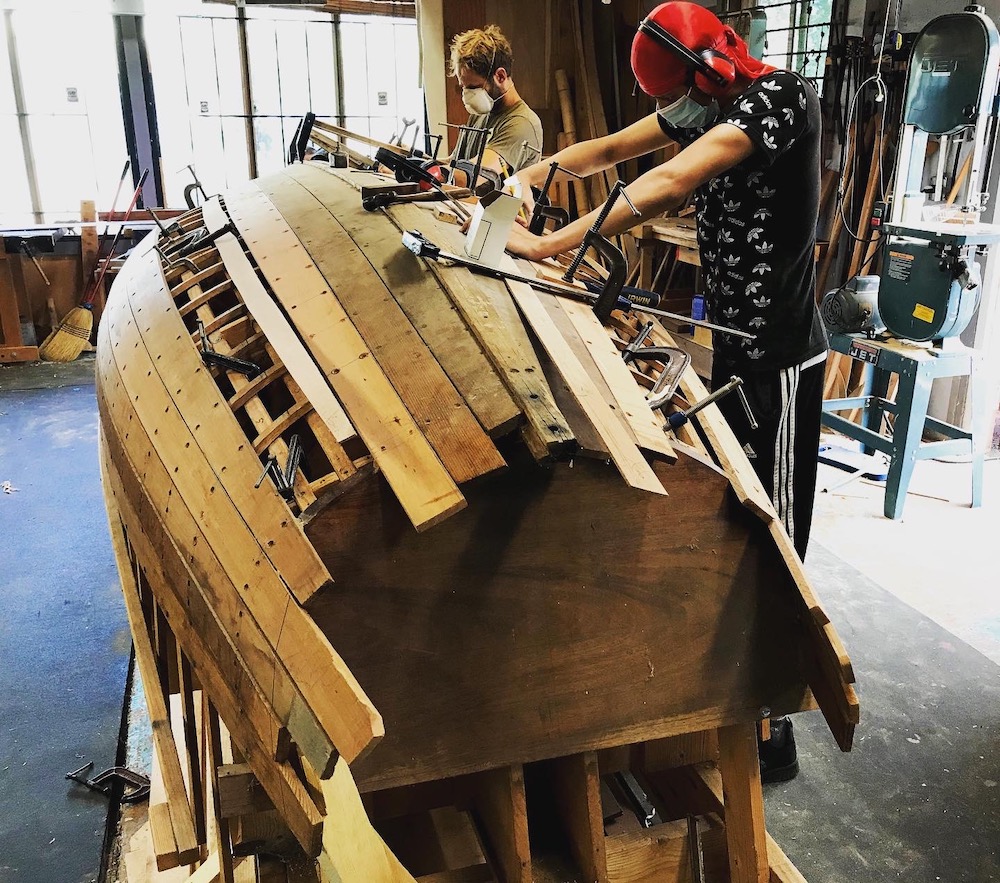
Being a teenager is tough. Many of our youth don’t have the most stable home life or consistent adults in their lives. Yes, we provide job training and first-time job experience, but I think of equal importance is offering a safe space with stable and trusted adults where youth can feel welcome and valued.
What we do at Waterside is offer a pathway where youth who may not have had much opportunity to experience success in their life can pretty quickly learn some hand-skills and soft skills applicable to any future employment. We also do a lot of wraparound support and case management. We help youth with everything from setting up bank accounts, finding housing, tutoring, helping apply to college or other training programs, to creating a resume and helping them apply for jobs.
What is one of your favorite things about working with Waterside Workshops?
I love being connected to the work we do. Like many of our youth and staff, I enjoy working with my hands and try to help out in the bike shop whenever I have some downtime from doing Executive Director stuff. It not only gets me out of my office chair but gives me a good sense of how things are going from an operations standpoint. Those moments also allow me to check in with staff and youth interns on a more personal level.
An ongoing joke here, stemming from youth who don’t really understand what I do when I’m sitting at the computer, is that I just watch YouTube all day. Seeing me wrenching on a bike helps dispel some of that myth.
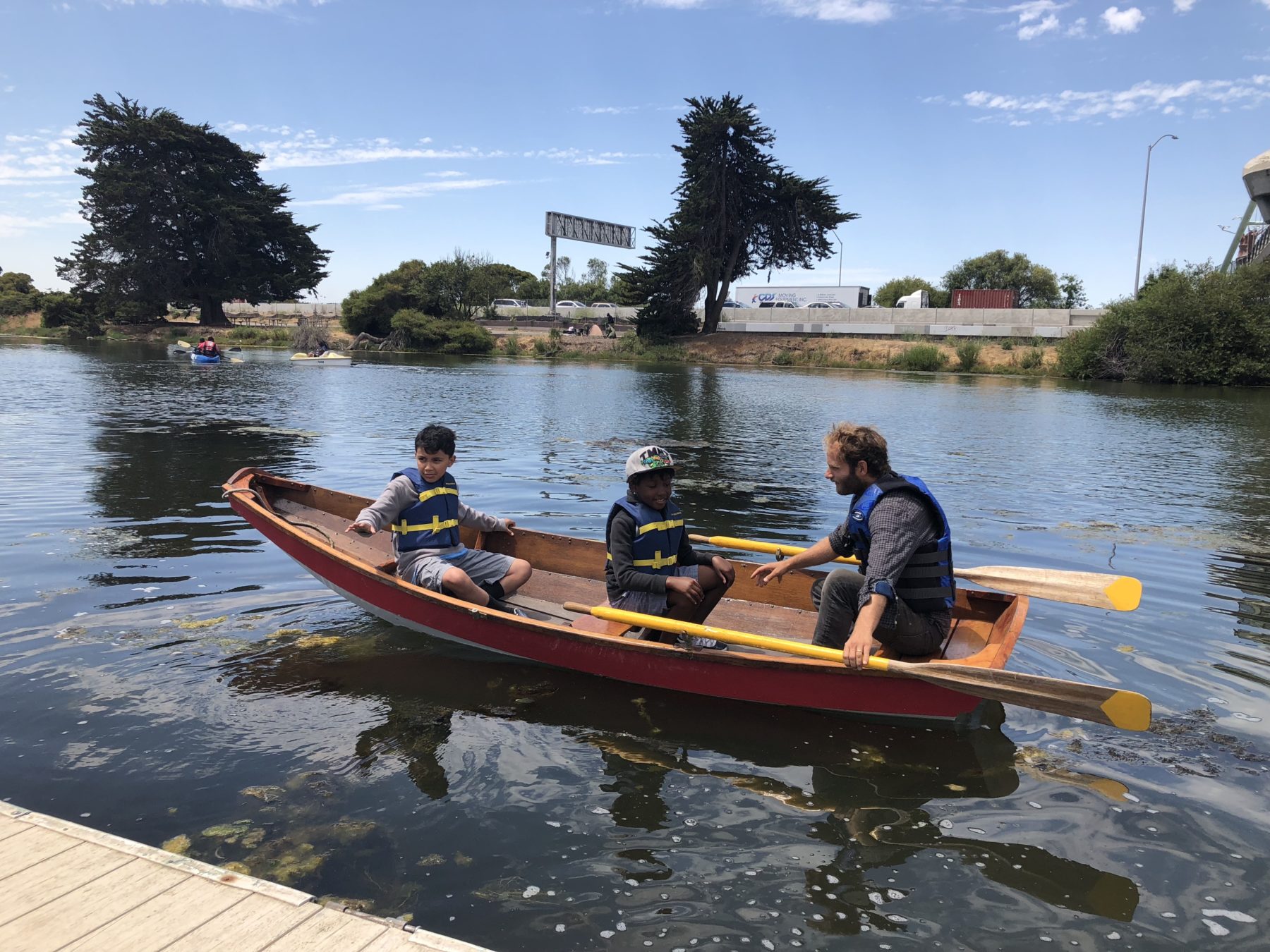
A while back I was working with environmental conservation organizations researching and writing reports and academic papers. While I found the subject matter interesting, it was hard to wrap my head around how all of my hard work wasn’t really going to measurably change much. Here at Waterside, I can actually see progress happening in real-time, whether it be a boat being built, a bike getting fixed, or one of our trainees getting better and better at what they do.
Is there a life-changing story that really sticks with you from the work being done within the organization?
There are dozens of stories I can think of off the top of my head that would qualify as life-changing, and in some instances, lifesaving. Most of these stories are very personal to the youth and out of respect to them, I don’t feel comfortable sharing them here.
A few months ago, a media company up the street profiled Akira, one of our bike mechanics, for a short video series they were putting together called “Bay Area By Hand.” Akira interned with us the summer before his senior year. We ended up hiring him on as youth staff in the bike shop and he was with us for a little over two years until a few weeks ago when he transitioned to full-time employment as an auto mechanic. It was great to watch him steadily improve his mechanics skills, grow his confidence, and really excel as an employee. He became really integral to the operations of the bike shop, and though it is the point of what we do, we were sad to see him move on. You can check out his highlight below.
Street Level Cycles – Bay Area By Hand #1 from Pedal Born Pictures on Vimeo.
Can you share with us all the different ways that youth can get involved with the program?
We offer both internships and classes for youth. Our internships are targeted towards youth aged 14-24 and are set up like an apprenticeship. Youth start out with a 120-hour internship, but this is often extended based on the youth’s interest and how well they are doing.
There isn’t a set curriculum per se, though we do have some standard projects that youth start out with, such as making a paddle in the boat shop or learning how to fix a flat in the bike shop. Interns are often working one-on-one with an instructor, which could be a more experienced youth intern or one of our adult staff members. We think this is really empowering for youth because after just a few days you have expertise that you can share with others. Most of our youth internships are paid, either through one of our partner organizations or by Waterside directly. The unique thing about our programs is that interns get to contribute to the operations of our social enterprises. A bike that they refurbish will make its way out onto the sales floor or an intern will get a customer set up with a boat rental.
We also offer classes for youth ages 9-14. These classes are often partnerships with a local middle school or other youth-serving organization. For example, we recently wrapped up a class with a local Girl Scout troop in our boat shop where they built a plywood canoe from start to finish.
The wood boats being made by youth in WW’s workshop are gorgeous! Can you share a bit more with us about how this art found its way into this organization and what do the youth think about the boats?
Our buildings are owned by the City of Berkeley and are on the water’s edge at the Berkeley Aquatic Park. Over their long history, they’ve housed various rowing and sailing clubs, so there’s a historical connection to our current work. One of Waterside’s co-founders and the Berkeley Boathouse Program director, Helder Parierra, has a strong interest in wooden boatbuilding and this program has been integral to Waterside since our founding in 2007. Helder was born in the Azores but grew up in California’s Central Valley. He went back to the Azores as a young adult and apprenticed with a local boatbuilder learning how to build traditional small wooden whaling boats. As I understand it these traditional boatbuilding techniques are a dying art in the Azores, so part of his impetuous was to learn from these old masters before their knowledge passed with them.
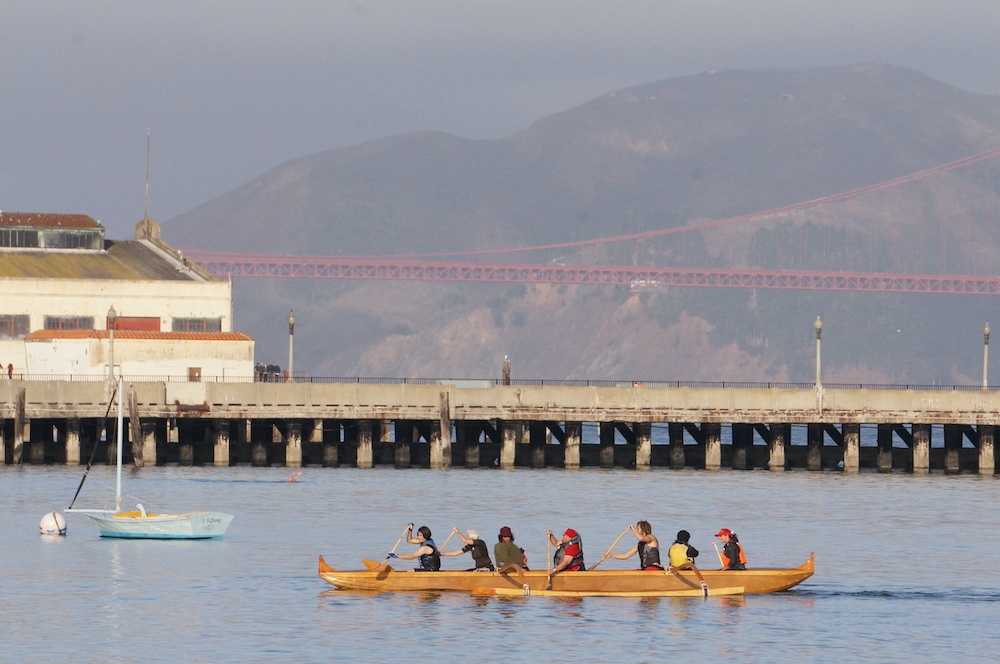
An intern’s first project in the boat shop is usually making a paddle, which exposes them to most of the hand tools and techniques they’ll be using in the shop. After that, they jump into whatever projects the boatshop has going on at that time. At any given point we’re maintaining our current fleet of boats which involves a lot of sanding, painting, and varnishing, as well as building a boat or two. These boats range from simple 3-person plywood canoes to larger, more intricate crafts.
A couple of years ago the boatshop built a 28’ Hawaiian outrigger canoe. These boats were traditionally made by hollowing out a tree. This boat is unique because we used lapstrake (overlapping plank) construction. It is a gorgeous boat and great for our programs because 4-6 people can paddle at the same time, and we can also take it out into San Francisco Bay as it is super stable and safe in rough water. About half of our youth participants have never been in a boat before coming to Waterside. During their time here some of them get really into boating and sailing.
In addition to building boats, we offer rowboat and kayak rentals to the general public here at the Aquatic Park. We also build and sell Adirondack Chairs and cutting boards, all handmade by the youth and staff in our shop.
You also teach kids to build and work on bikes, can you tell us a bit more about how this program works and where the bikes end up?
Our Street Level Cycles program has three main goals:
- Get more people on bikes and make biking more accessible
- Give new life to old, unwanted bikes
- Teach youth and the community how to repair and refurbish bikes
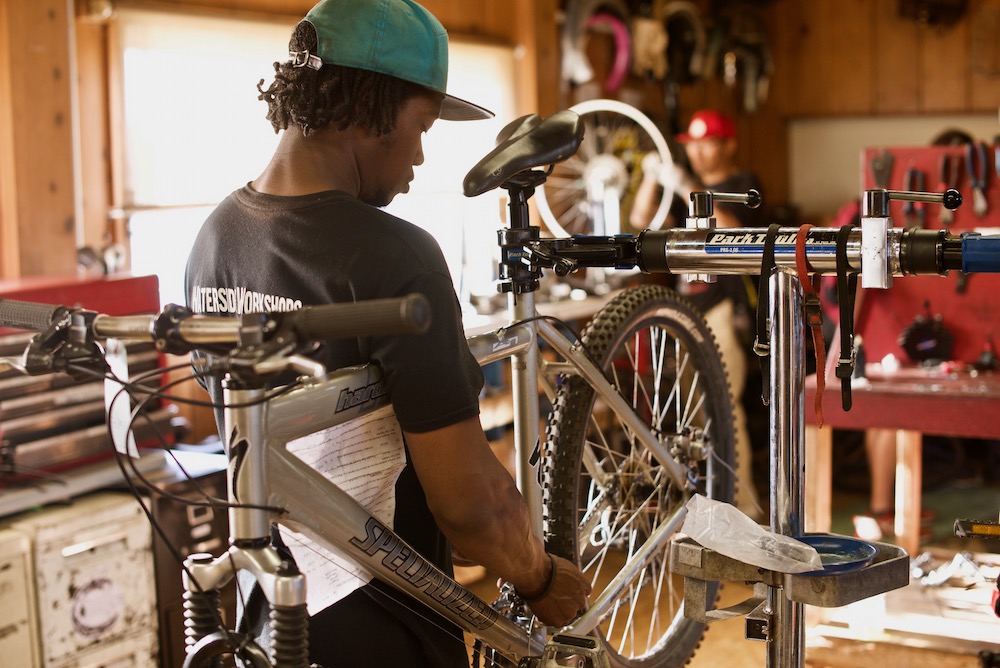
We take unwanted bicycles donated to us from the community and use them as a teaching tool for youth in our programs. Youth learn how to fix all the mechanical systems of a bike while refurbishing them into functional machines again. These bikes are either sold in our used bike shop as an earned income source for the organization or donated out to low-income youth or adults in need of a bicycle.
On the weekends we have a Community Open Shop where anyone can come learn how to fix their own bike. This is a free resource for the community; we provide all the tools, workstands, parts, and expertise to get someone’s bike rolling again and at the same time, teach the public bike repair. Many of our Open Shop patrons rely on their bikes for transportation. Paying a shop to fix your bike can be pretty cost-prohibitive for many people, so if you can learn how to do a few simple things, like fix a flat tire, you can save a lot of money in repair costs.

The beautiful thing about refurbishing old bikes is that in most cases, the essential parts of the bicycle are still good (frame, wheels, components, etc.). Each year over 1,000 unwanted bikes are donated to us from the community. We do our best to get as many of these refurbished and back on the road again. Though we do often get some really high-end classic bikes donated to us, our bread and butter is a 90s-era mountain bike that we set up as a reliable commuter and sell for $200-$400.
Youth interns are part of all of these operations, from processing incoming donations to refurbishing bikes, helping out in the Open Shop to selling bikes and repairing customer bikes in our bike shop.
Which is your personal favorite, bike or boat?
I’ve been super into bikes ever since I learned how to ride a bike. I grew up in Minneapolis which has a really amazing network of bike paths all around the city. From my house, I could ride for miles and miles without having to ride on the street with cars. Looking back, I had an incredible amount of freedom to just roam around the city as a pretty young kid. I also lived next to a network of unofficial dirt trails, which got me into mountain biking just as it was becoming a national trend.
I’d also hang out at the bike shop down the street, ogling the latest bikes. I was fascinated with the mechanics working in the back but didn’t actually learn how to work on bikes myself until my late 20s. Growing up, I would have loved to learn bike mechanics and get involved in an organization like Waterside.
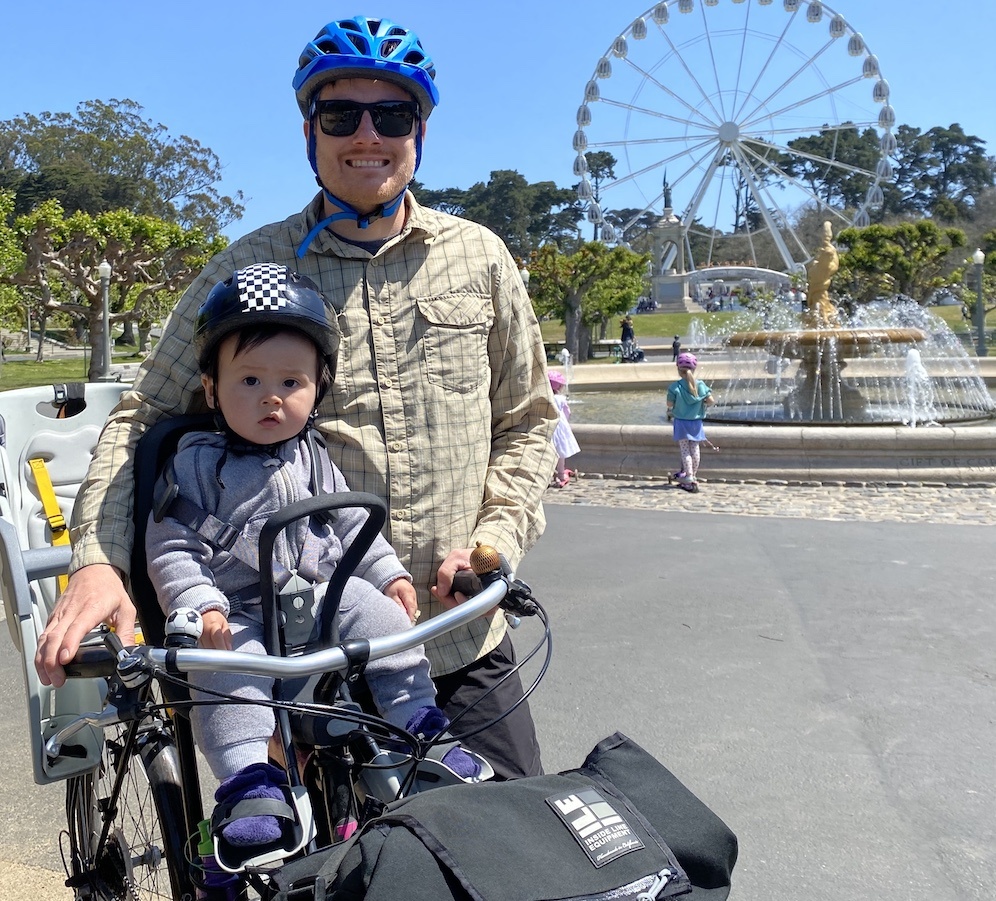
I truly believe that bicycles are the solution to so many of society’s problems. They can help solve the climate emergency as bikes have the potential to replace most car trips in this country (the majority of car trips are less than 6 miles). So much of our urban environment is devoted to roads and parking, so getting people out of cars would reduce local air pollution and improve respiratory health outcomes. They are also incredibly cheap when compared with car ownership. I’ve seen calculations that bikes actually make you money if you factor in the lifetime health benefits of regular exercise.
Waterside also has a youth-run cafe, so we have to ask, are you a coffee or tea person and how do you take it?
We actually just reopened the café after an 18-month hiatus! We serve coffee that’s roasted right up the street, tea, bagels, and other snacks. The café is a great job training opportunity and we’ve had great job placement outcomes for youth who work in our café. Once you know how to use an espresso machine and can make a latte, you can easily get a job at just about any other coffee shop.
I’m a coffee person. At home, I use an Aeropress (using the inverted technique, for those curious) and drink it black. I’m usually good for the day with just that one cup.
Where would you like to see the organization in 5 years?
Waterside has been part of the West Berkeley community since our founding in 2007, but I envision an even larger presence in the community. We’re working on offering more opportunities for people to get involved, including regular volunteer opportunities, community rides, adult bike repair classes, and summer camps.
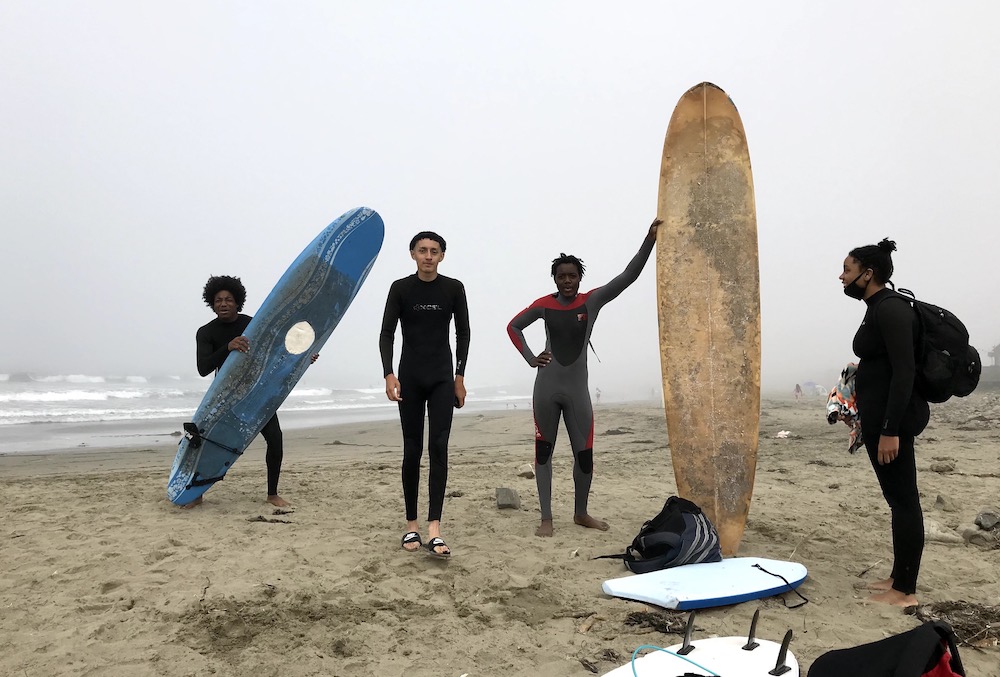
I’d like to see the organization continue to grow programmatically. We aren’t necessarily looking to serve dramatically more youth each year, but rather deepen our services for those youth. We’re hoping to build more relationships with employers and other skilled training programs so that we can provide employment pathways for youth when they’re ready to transition from Waterside.
As an inspiring member of the outdoor community, what changes would you and/or Waterside Workshops like to see from the industry to ensure that the outdoors truly are for everyone?
I think that our outdoor recreation programs are at the forefront of efforts to make the outdoors a more diverse and inclusive place for all. We bring groups of youth on camping trips to places like Sequoia National Park, Point Reyes, Yosemite, and Humboldt Redwoods, just to name a few recent trips. One of our Board Members has a connection to a cabin up at Lake Tahoe, so we try to do at least one winter trip and take the kids sledding, snowshoeing, and snowboarding. For many of our youth, these trips are the first time that they’ve been camping, walked on a beach, or touched snow. We also regularly take local day trips to go hiking, mountain biking, and surfing. All of our trips are completely free for our youth; we provide all the transportation, food, and gear.
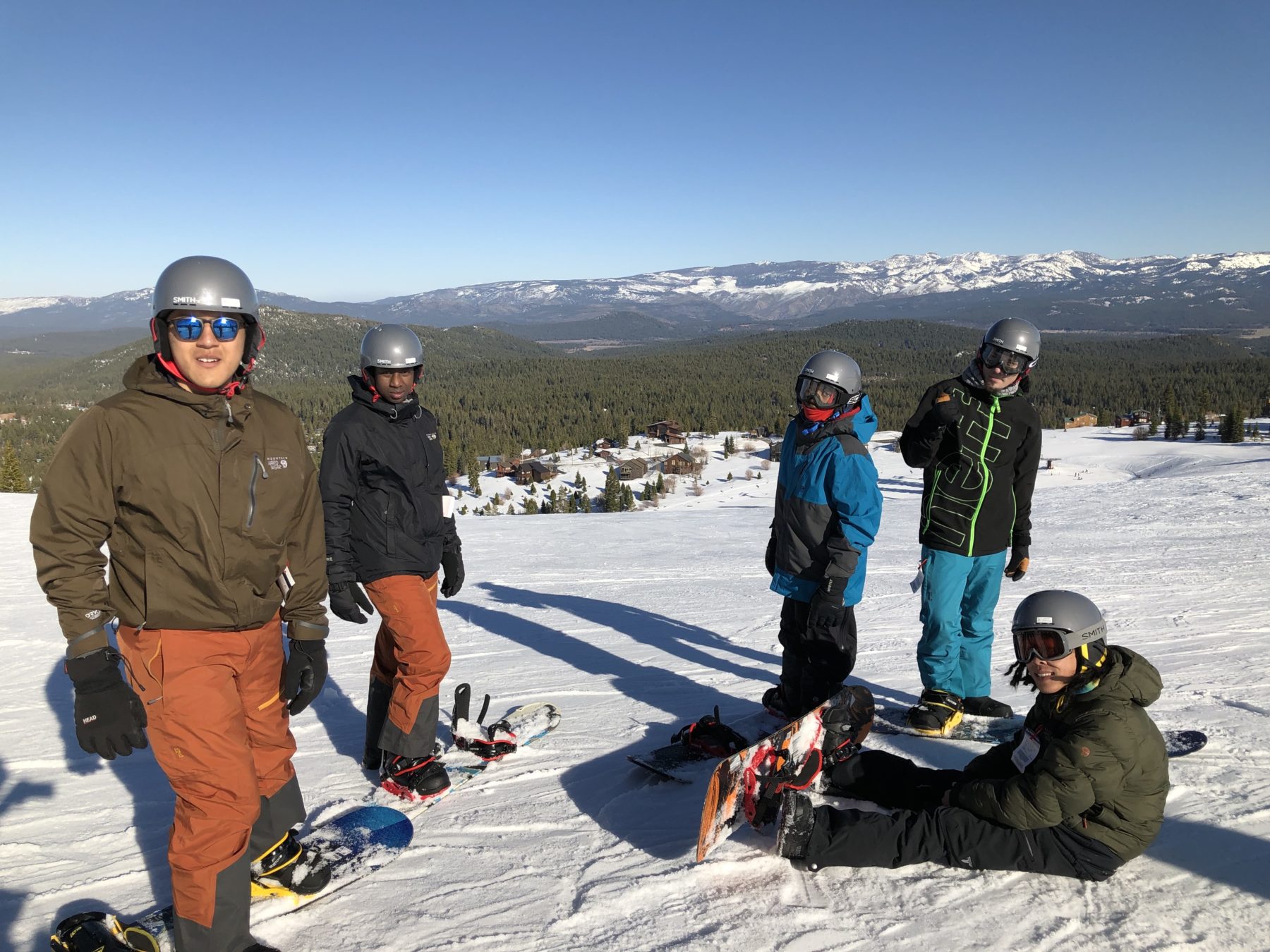
We have a gear library with outerwear and tents donated from Mountain Hardwear and other camping gear so everyone can be physically comfortable during the trips. Physical comfort can really make or break an outdoor experience for someone, especially if they are new to the outdoors. Alumni of our programs will often stop by to borrow a tent and sleeping bag for a trip they are planning with their friends.
The Bay Area has so much world-class nature all within an hour of Berkeley – beaches, old-growth redwood forests. I’m always struck by how many of our youth have never been to these places, which really speaks to the heart and challenge of trying to make the outdoors a more diverse, inclusive space. We’ve found that it’s a tricky balance to get some of our youth to participate in our outdoor adventures. There are many reasons for this but I think a lot of it boils down to the fact that many of our youth participants haven’t had the opportunity to spend much time in nature as they’ve grown up or they haven’t seen people that look like them if and when they do go to a state or national park.
So much has been written and said about how and why the outdoors are not a diverse and welcoming place for BIPOC folks. It’s a huge challenge facing the outdoor industry.
I applaud many outdoor brands and retailers for making strides to increase diversity across the industry, from retail, to product development, to brand ambassadors. We’ve been partnering with Sports Basement, a local outdoor retailer, in their diversity and inclusion efforts. We’ve also been working with them as a job placement partner for our youth graduates.
It has been great to see movement and traction to make outdoor spaces more inclusive from the philanthropic community as well. Private foundations and government grant agencies have recognized this problem and have created grant programs specifically designed to help get more youth into nature from communities traditionally underrepresented in the outdoors. For example, we are currently receiving funding from the California State Coastal Conservancy under their Explore the Coast grant program to bring youth on first-time camping trips and outings to coastal parks around the Bay.
We’re proud of our efforts around this so far, but much more work needs to be done.
What advice would you give to someone wanting to start an organization similar to this in their own state?
Waterside operates on a social enterprise model; we generate 40-50% of our annual revenue in our shops and programs. Grants and donations can sometimes be fickle depending on the economy and other factors, so having this stable and predictable revenue source has allowed us to steadily grow the organization over the past 14 years.
Start-up funding in the nonprofit world is pretty rare, so I would say to be prepared for some lean years before you can get established and build a donor base.
We’ve found that funding can lead to more funding. If one foundation sees that another funder they know is supporting you, it might make them more likely to give you a grant. In recent years we’ve started receiving more multi-year grants to support our core operations. These grants have been enormously helpful in allowing us to grow our programs and offer salaries to our talented staff more in line with the high cost of living in the Bay Area.
When you’re not busy juggling all the things for Waterside Workshops, how do you recharge and relax?
I’ve got two young kids at home, one and four years old, so believe it or not, coming into work is often more relaxing and less stressful than wrangling the kids at home.
But outside of work, I love being able to just go for a bike ride. It’s hard to find time to go on rides these days, so I’m often either going on night rides after the kids have gone to bed or rides early in the morning on the weekends. I often go riding with a group of dads who are in the same boat.
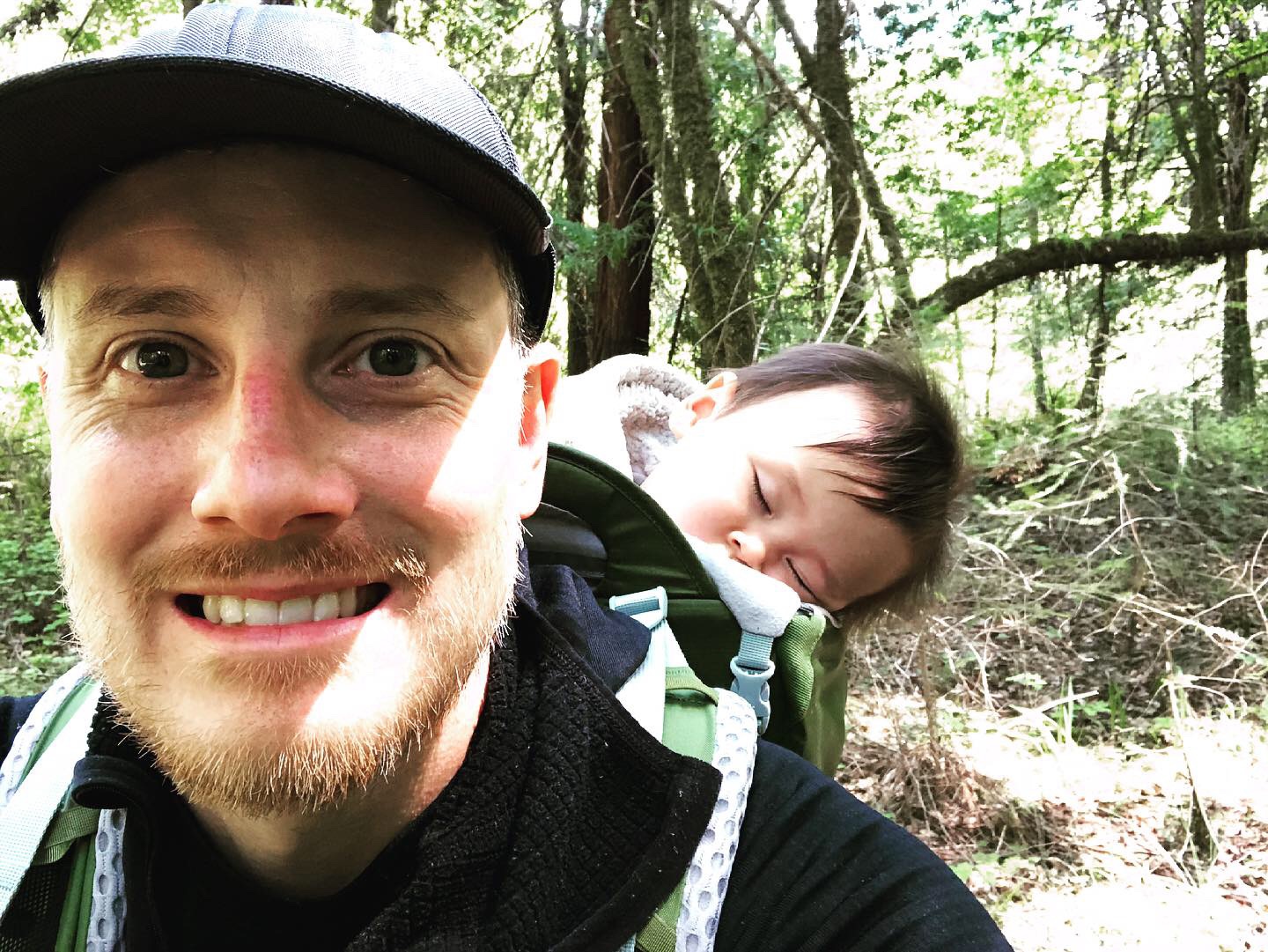
The Bay Area has some amazing riding minutes from my doorstep. I can be out of my front door and across the Golden Gate Bridge in about 20 minutes. One of my usual rides takes me across the bridge and up in the Marin Headlands where there are miles and miles of singletrack and fire roads. I love being out there at night because there aren’t any other people and only minimal signs of civilization. Many trails in the Bay Area can get pretty crowded so it’s nice to have trails to yourself. I’ll usually see all sorts of critters, including coyotes, owls, and bobcats.
My 4-year-old has been riding a bike for a few years now and so we’ll go on rides in the park together on the weekends. We’ve just started riding on dirt trails and he loves it! I can’t wait until he can take on more advanced trails. I’ve already got a balance bike ready to go for my youngest, even though he just started walking.
What are some must-visit spots either by bike or boat in your neck of the woods?
I always recommend visitors take the boat out to Alcatraz to tour the island and prison. The views of San Francisco and the Bay are worth the trip alone.
There’s a cool exhibit that talks about the Native American occupation of Alcatraz in 1969, which helped kick off the Native American civil rights movement in this country. Waterside participated in the 50th-anniversary celebration of the occupation in 2019. A number of tribes brought boats down from across the West coast and rowed them out around the island and back. Our Hawaiian outrigger canoe and a few staff were fortunate to participate in this event.
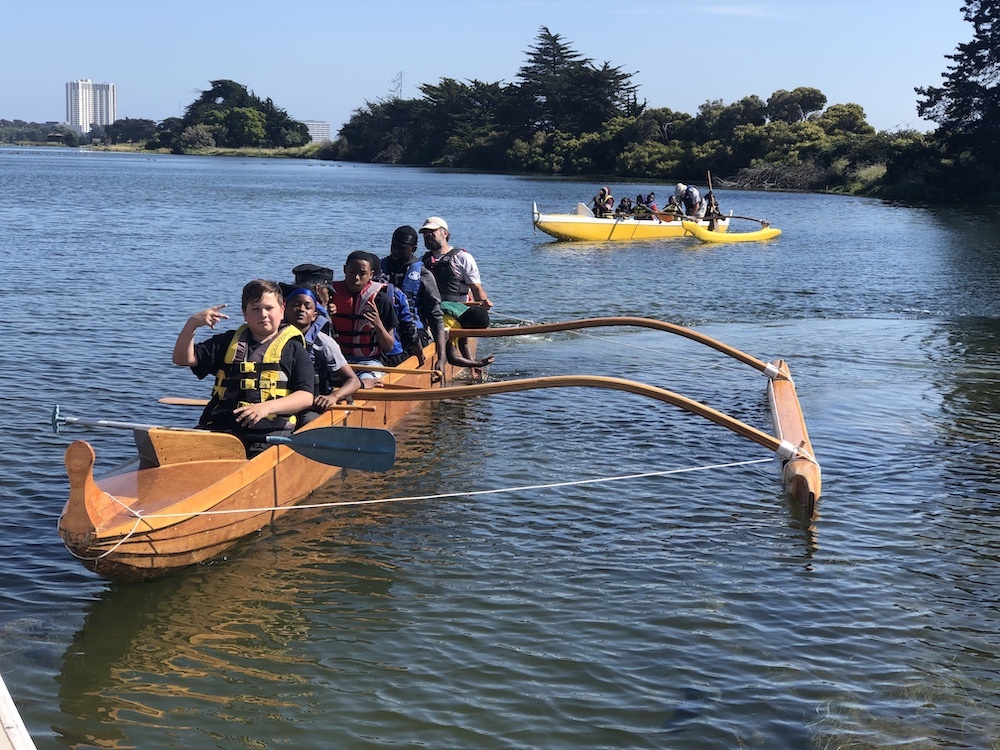
What song/artist is playing on repeat for you right now?
I used to be really on top of the music scene, but again, with kids and life it’s hard to make it a priority these days. Plus, in the age of Spotify and having instant access to almost any album I suffer from decision paralysis. To make things easy, I usually just pop on KEXP’s (Seattle’s independent radio station) live stream to catch up on what all the cool kids are listening to.
Are you a podcast or documentary person? Is there anything you’d suggest to our readers to listen to or watch?
I don’t listen to podcasts much, but I did just listen to a Key Notes podcast “What EXACTLY Makes Radiohead So Good”. Radiohead is one of my favorite bands and this was an interesting dive into a few of their songs. I don’t know much about music theory, but this podcast talked about the unique song structures and forms that they’ve pioneered in many of their songs. For example, I didn’t realize that on the song “Like Spinning Plates,” Thom York sang the lyrics backwards, and then they play the tape forwards to make it so you can understand it. Even if you aren’t a huge Radiohead fan, it’s worth a listen.
What’s something people would be surprised to learn about you or the organization?
My first name is really just the letter “S”.
Is there anything else you’d like to add that we didn’t ask today?
I feel very fortunate to be the Executive Director of Waterside. Our staff and board are all incredibly talented and hard-working, and none of this would be possible without their sustained efforts to build and grow the organization over the past 14 years.
I’d be remiss in my duties if I didn’t ask for donations to support our free job training and outdoor recreation programs for local East Bay youth. I’m obviously biased, but Waterside is a really special organization that transforms the lives of local youth.
Visit Waterside Workshops at:
and via Social at:
Instagram: @Watersideworkshops
Facebook: @Watersideworkshops
Or if you’re in Berkley, visit them in person at 84 Bolivar Dr. on the north side of Berkeley’s Aquatic Park. Directions can be found on their site.
